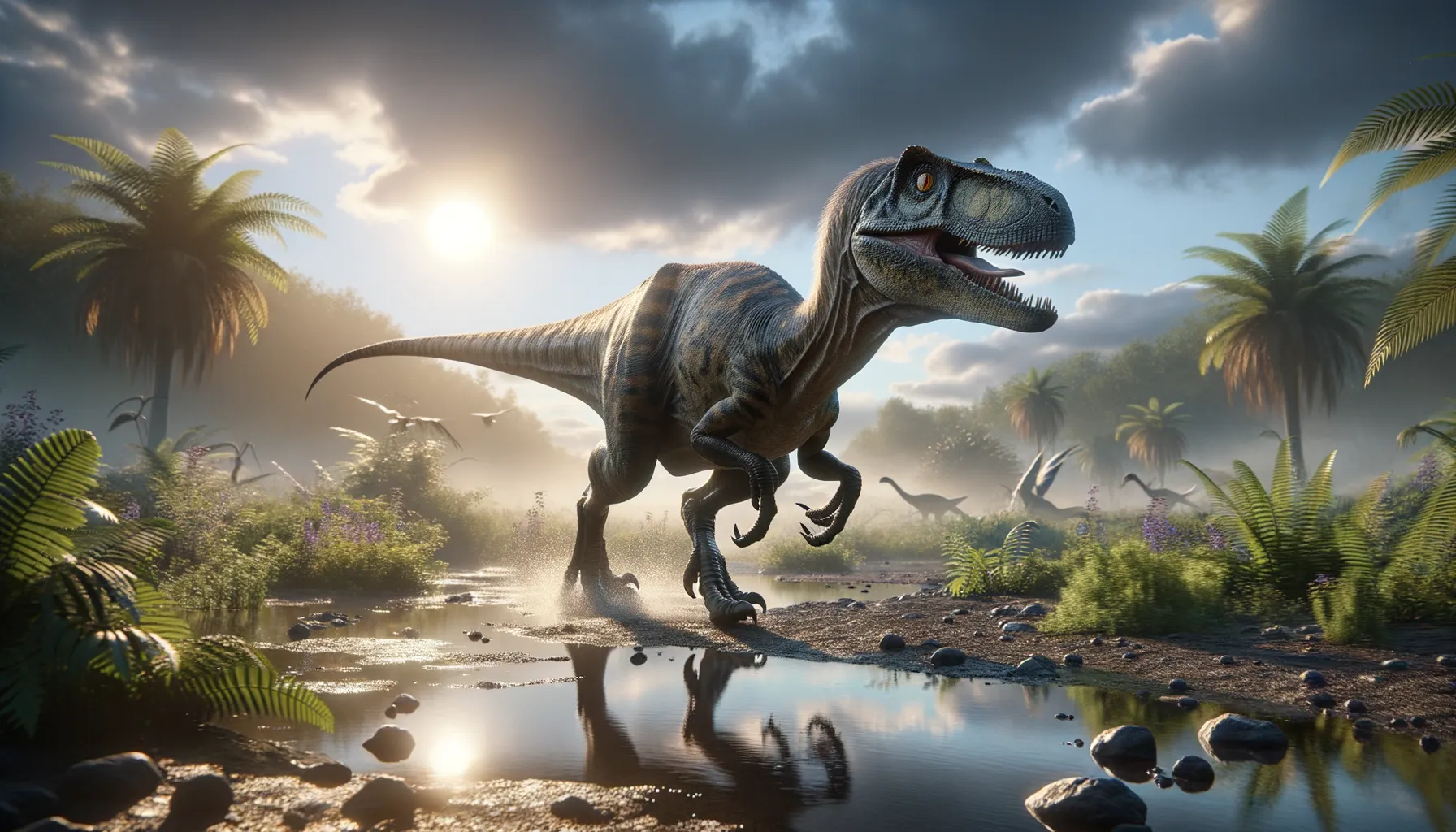
Apatoraptor
A swift mystery of ancient Canada!
Period
Cretaceous
Length
About 6 meters in length.
Height
Up to 3 meters tall.
Weight
Estimated to weigh around 300 kilograms.
Apatoraptor was a medium-sized theropod dinosaur that lived during the Late Cretaceous period. It had features similar to both birds and non-avian dinosaurs, showcasing an evolutionary link. Its name highlights its diverse and sometimes perplexing anatomical features. Known for its moderate speed and agility, it may have fed on small animals and vegetation. Paleontologists have gained insights into its lifestyle and behavior from the well-preserved fossils discovered in Alberta, Canada.
Diet
Apatoraptor was an omnivore. It likely fed on small animals, insects, and possibly some plant material. Its diet was varied, contributing to its adaptability.
Hunting
With moderate speed, it could chase down small prey. It likely used its agility to maneuver through its environment when hunting. Stealth and quick bursts of speed were its advantages.
Environmental challenges
Apatoraptor lived in a dynamic environment with fluctuating resources. Nearby water sources could dry up during certain seasons, impacting food availability. It had to navigate competition from other predators in its habitat. Climate changes during its time required adaptability for survival.
Speed
Moderate runner, like a modern ostrich.
Lifespan
Likely 20-30 years, similar to other medium dinosaurs.
First discovery
Found in Canada in 2010, announced in 2016.
Fun Facts
- Apatoraptor was a feathered dinosaur that lived about 76 million years ago during the Late Cretaceous period.
- This dinosaur is named after Apate, the Greek goddess of deception, hinting at its mysterious nature and the initial confusion about its classification.
- Apatoraptor was found in what is now Alberta, Canada, highlighting that many exciting dinosaur discoveries are made in North America.
- Unlike the giant dinosaurs, Apatoraptor was relatively small, estimated to be about the size of an ostrich.
- Fossils of Apatoraptor show it had large, powerful claws, suggesting it could have been an agile predator.
- Despite its fierce appearance, some scientists believe Apatoraptor may have been an omnivore, eating plants, small animals, and insects.
- The discovery of Apatoraptor helps scientists understand more about the diversity of life during the dinosaur age.
Growth and Development
Apatoraptor went through significant growth spurts during its juvenile years. The fossil evidence suggests juveniles were highly active. Rapid development likely helped it escape predators. Its feathers might have played a role in temperature regulation during growth.
Habitat
Lived in what is now Alberta, Canada, a region with rivers and forests. The environment was lush, supporting diverse wildlife. Its habitat offered cover and diverse food sources, essential for its omnivorous diet. Seasonal changes required adaptable living strategies.
Interaction with other species
Likely engaged in competitive interactions with other theropods. Could have fallen prey to larger carnivorous dinosaurs. Might have had symbiotic relationships with smaller species, exploiting shared resources. Interaction with herbivorous dinosaurs was possible due to shared habitat.
Natural lifespan
Its natural lifespan was likely around 20-30 years.
Reproduction
Apatoraptor likely laid eggs in nests, similar to other theropods. The presence of eggs suggests some level of parental care. Fossils may show group nesting sites, indicating social structures around reproduction. Hatchlings were possibly born precocial, reducing dependency on parents.
Social behaviour
Evidence suggests Apatoraptor might have lived in small groups. Group behavior could have offered protection from predators. Social interactions may have been crucial for hunting and foraging. Displays or vocal calls might have been used for communication within groups.
Fossil locations
Fossils have been predominantly found in Alberta, Canada. Specimens are housed in Canadian natural history museums. The discovery of multiple fossils aids in understanding its environment. The accumulation of fossils suggests rich Cretaceous deposits in the region.
